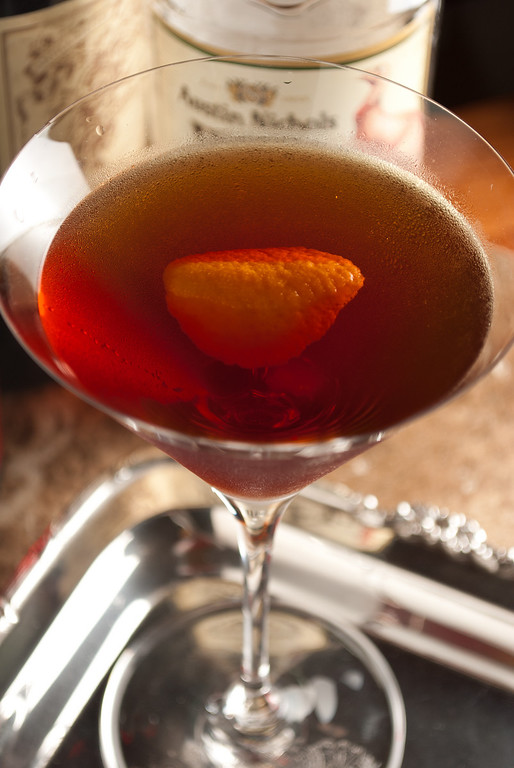When one of my friends asked for a Saratoga Cocktail recently, I was skeptical. I had tried this drink before, and I was not impressed. It seemed unbalanced, or unfinished—the flavors just didn’t seem to blend well. This time around, it was an astonishingly delicious and well-balanced drink. I’ll grant that my tastes have evolved since then, but I think the real reason the Saratoga tasted better this time has everything to do with a different mix of ingredients, particularly the vermouth.
The Saratoga is an excellent example of how the flavor characteristics of your ingredients affect the final product. The classic Saratoga is in the “equal-parts” class of cocktails; these are typically made with equal portions of three or more ingredients, and as I’ve noted previously, messing with those equal proportions is not really in the spirit of the game. Ingredient selection is everything, and it makes or breaks the recipe.

In the case of the Saratoga, a simple blend of whiskey, brandy, and vermouth, only the vermouth was different this time around. When I made that first Saratoga, the one that just couldn’t capture my imagination, I used our house vermouth of long standing, Martini & Rossi Rosso. M&R Rosso has many good things going for it—it is flavorful, affordable, and a versatile blender with a broad selection of cocktails. Most significantly for this story, it retains the fruity, grapey characteristics of the wine from which it’s derived. And that just doesn’t seem to be the right match for Saratoga.
As it happens, I had recently, inexplicably, sprung for a bottle of Carpano Antica after resisting its unconscionable price point for over a year. Well, as we used to say in college, “if you got it, flaunt it,” so I did, and it became part of this more recent incarnation. It was a real eye-opener. The Carpano is much more aromatic and much less winey than than the M&R. I like its herbal fullness and its sweet-and-bitter balance; expensive though it is, it is the element that raises this drink from forgettable to special.
And so the Saratoga looks like this:
Saratoga Cocktail
- 1 oz (30 ml) brandy (Rémy Martin VSOP)
- 1 oz (30 ml) rye whiskey (Wild Turkey 101 Rye)
- 1 oz (30 ml) sweet vermouth (Carpano Antica)
- 2 dashes Angostura bitters
Stir ingredients over ice until well chilled, strain into a cold cocktail glass. Express and garnish with orange.
When Jerry Thomas first published this drink in his 1887 Bartender’s Guide, he did not specify what type of vermouth, but sweet (red) vermouth is the only way to make the drink make sense, and is the long-standing accepted ingredient. And in 1887, the red Italian vermouth was the type that, as David Wondrich says, had “traction.”
The Thomas original garnished with lemon, but the orange and its expressed oils provide a much more pleasant nose with the whiskey.
One lesson I learned from this is that the Saratoga works best with an herbal or spicy vermouth, such as Carpano, rather than the more aromatic styles.
The other lesson I’ve learned is that blending brandy and whiskey works extremely well—they meld together very naturally. I prefer this drink with a higher-proof rye like the Wild Turkey 101 or Rittenhouse to maintain the whiskey-drink profile. The result is reminiscent of the Manhattan, but with an orange nose and a rounded lushness from the cognac and the Carpano.
“Saratoga Cocktail” at cold-glass.com : All text and photos Copyright © 2010 Douglas M. Ford. All rights reserved.
Brilliant, as is the vieux carre
Agreed!